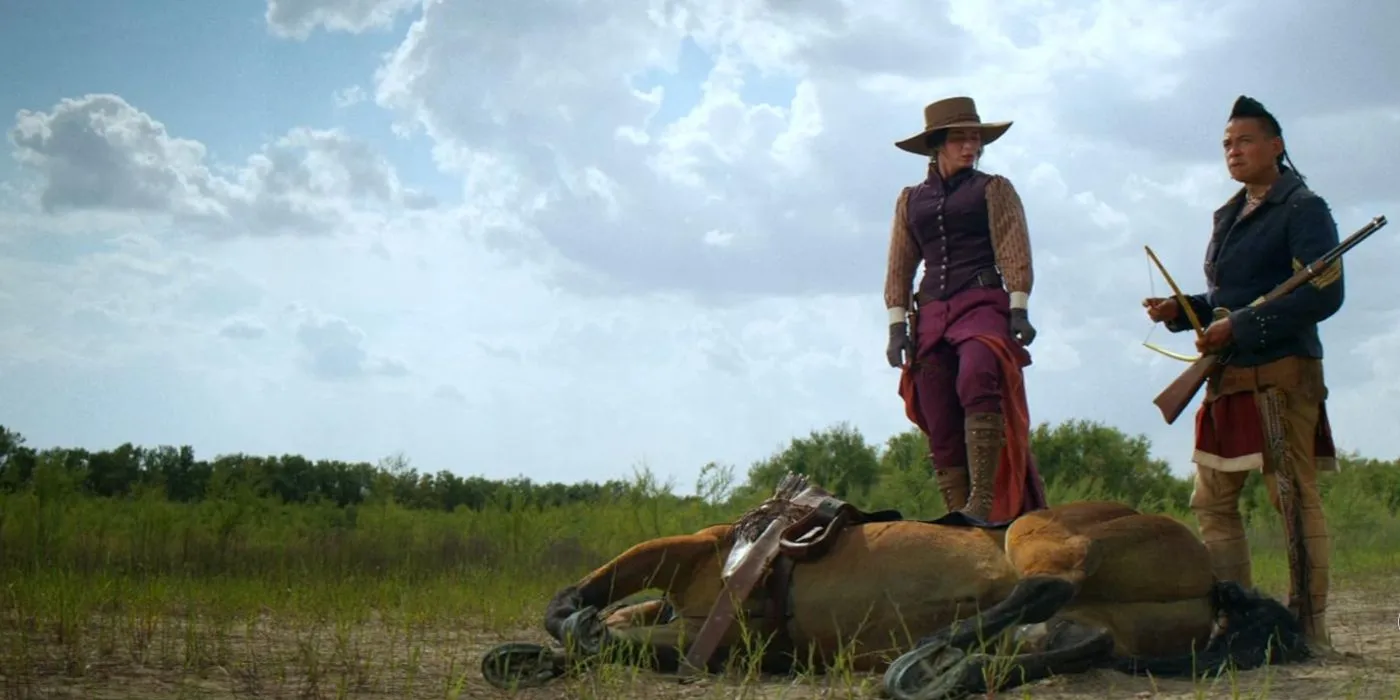
Content warning: The following article includes references to sexual assault.
The English: A Fresh Perspective on the Western Genre
Amazon Prime Video and BBC One’s miniseries, The English, presents a unique take on the Western genre, crafting a narrative that is both engaging and thought-provoking. Set against the backdrop of the American Wild West, this compelling series stars Lady Cornelia Locke, portrayed by Emily Blunt, alongside Cashke Spencer as Eli, an Ex-Pawnee Scout. Together, they embark on a quest for vengeance following the tragic death of Cornelia’s son. This narrative reimagines classic Western tropes prevalent in the films of the 1940s and 1950s, all while weaving in contemporary themes and character depths often overlooked in traditional Westerns.
Exploring the Challenges of the 1800s Wild West
The 1800s was a tumultuous period in the American frontier, particularly for women and Native Americans, who take center stage in this drama. The English does not shy away from illustrating the harsh realities they faced. Beyond its themes of survival and revenge, it also introduces a poignant love story that offers an intimate glimpse into human connections amidst adversity. The series artfully balances the beauty of the expansive landscapes with the characters’ emotional turmoil, prompting viewers to wonder: Is this narrative based on true events?
Understanding The English’s Ending
The Confrontation: A Tense Climax

As the series reaches its sixth episode, the culmination of tension unfolds. Cornelia learns she has contracted syphilis from David Melmont, a man who previously assaulted her. This revelation further ties into the tragic backstory of her son, who lost his life at the tender age of 14 due to the same disease.
In this climactic episode, Cornelia and Eli finally confront Melmont. However, she struggles to execute vengeance, as Melmont embodies the last connection she has to her deceased child. In a surprising turn, Martha Myers, a woman who faced similar horrors at Melmont’s hands, attacks him. The brutal conclusion sees Eli stab Melmont, pushing them into a complex moral dilemma.
The aftermath of this confrontation reveals Sheriff Marshall’s difficult decision. He chooses to free them—if they part ways. Eli opts for a new beginning in Nebraska to reclaim his native lands, while Cornelia returns to England, where she faces the consequences of her illness fourteen years later, masked under a veil of bitterness and sorrow.
The Symbolism of Melmont’s Store
A Metaphor for Colonization

While Melmont’s Store does not exist in reality, it serves as a compelling metaphor for the injustices faced by Native Americans during westward expansion. Rather than being based on historical events, The English draws inspiration from real occurrences, such as the Sand Creek Massacre of 1864, which forever altered the lives of countless Native Americans. Although Eli represents the Ex-Pawnee Scout, historical accuracy is nuanced since Eli’s character likely did not exist.
Historical Influences in The English
Collaboration with Native American Representatives

Hugo Blick, the writer and director behind The English, has cultivated a profound appreciation for the complexities of the Wild West. His interactions with a former U.S. Air Force captain instilled in him a deep understanding of survival in rugged terrains, ultimately influencing his narrative choices.
Moreover, Blick drew inspiration from real friendships, particularly his bond with a Native American friend during his Montana years. A commitment to authenticity led him to seek input from representatives of the Cheyenne and Pawnee tribes, who meaningfully contributed to the portrayal of Native American narratives. They notably insisted that Eli, rather than succumbing to typical Western tropes, survives until the end.
Honoring and Challenging the Western Genre
Diverse Narratives in the Western Genre

The English stands out as a bold subversion of traditional Western storytelling. By placing a woman and a person of color in leading roles, it confronts the historical sidelining of these groups in the narrative of the Wild West. Cornelia’s character, adorned in a lively pink dress, challenges the era’s typical portrayal of women, standing firm against threats of violence—a vocalization rarely found in period representations.
Similarly, Eli’s character navigates the complexities of his own identity, grappling with his Pawnee heritage against the backdrop of his role as a former Calvary Scout. The series eschews one-dimensional portrayals of Native Americans, instead offering nuanced characters who reflect genuine struggles amidst a historical backdrop. The echoes of classic Westerns like Clint Eastwood’s Unforgiven reverberate throughout, further enriching the narrative.
The picturesque landscapes, riveting gunfight scenes, and horseback chases characteristic of Westerns are prevalent in The English. Yet, the series adeptly balances homage and reinventing these motifs, highlighting the underlying challenges faced by its protagonists while acknowledging the larger historical narrative at play.
Analyzing the Meaning of The English’s Conclusion
A Reflection of America’s History

The conclusion of The English serves as both a character resolution and a commentary on America’s turbulent history. Cornelia’s final moments in the theater, reconnecting with White Moon, represent a form of closure—a reconciliation with her past and the evils she has faced. The poignant acknowledgment of her illness intertwines with her sense of belonging to a larger historical legacy.
The significance of Melmont’s Store is amplified as a symbol of conquest that echoes throughout U.S. history. Named after the series’ antagonist, Melmont embodies the historical figures often romanticized despite their brutal actions against Native communities. His presence in the narrative speaks volumes about the foundational violence upon which America was built, reminding audiences of the [sacrifices endured by Indigenous peoples for the expansion of white settlers](https://screenrant.com/melmonts-store-english-true-story-inspiration-ending-explained/).
Leave a Reply